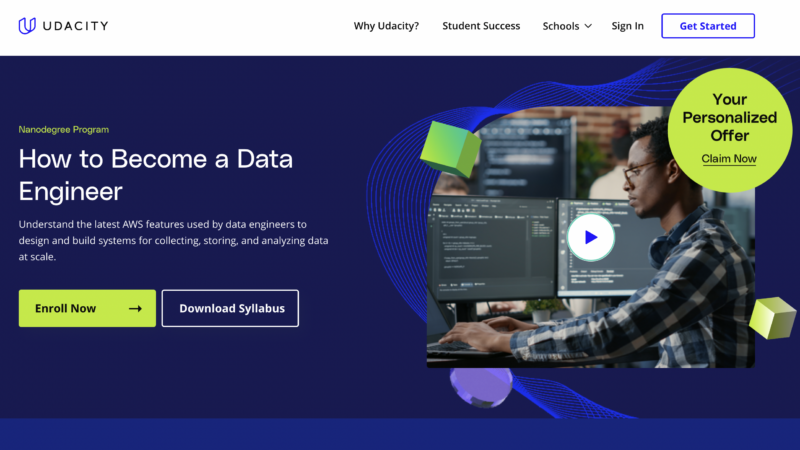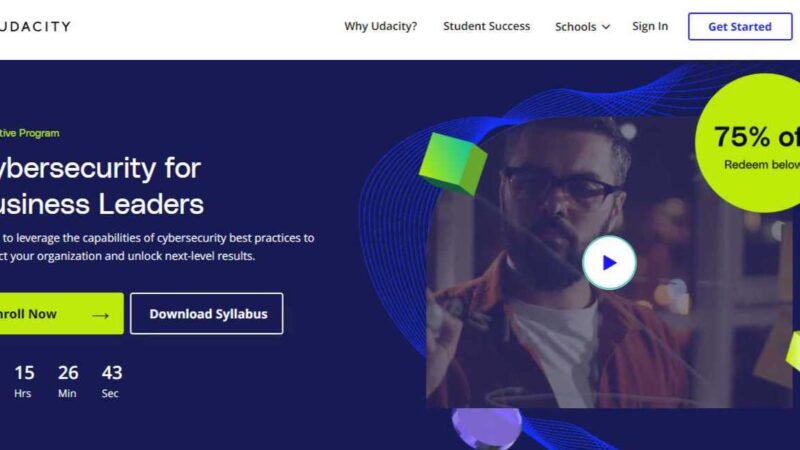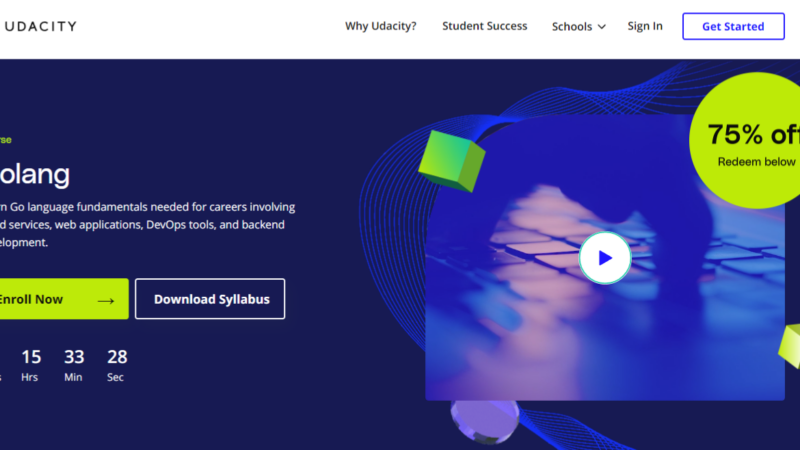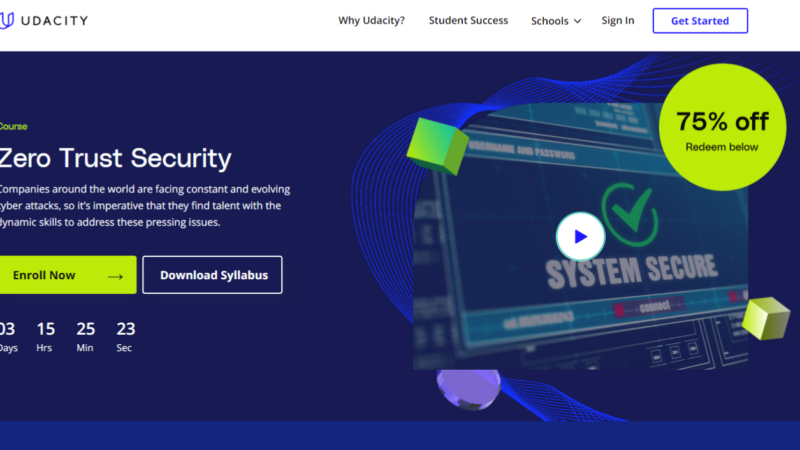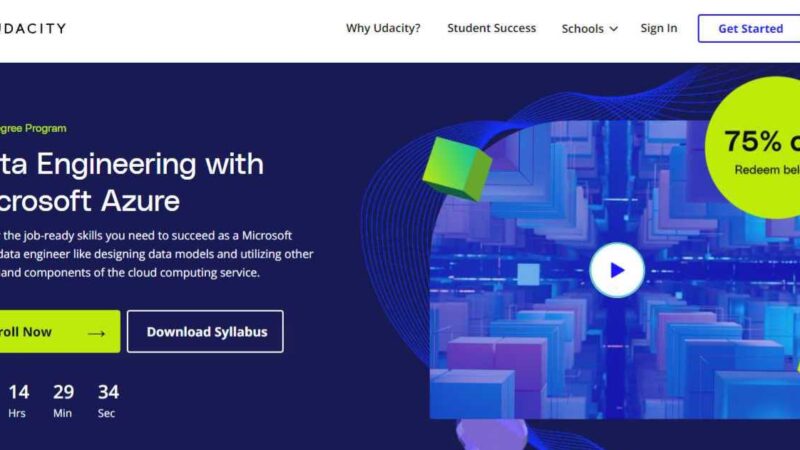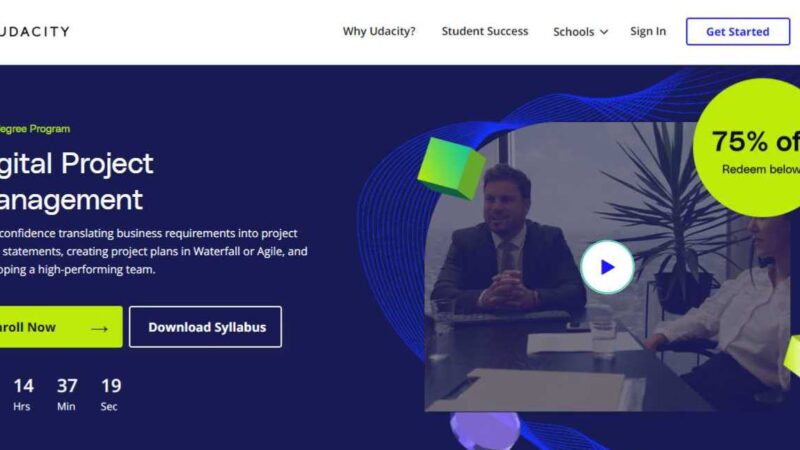Udacity’s Front End Developer Nanodegree Review, Is it Worth a Try?

Udacity’s Front End Developer Nanodegree Review, Is it Worth a Try in 2020?
Udacity is one of the leading online academies that is known for providing a well-rounded online course for those interested in the growing world of IT. With knowledgeable instructors and a curriculum that includes lots of real-life practice, they’ve caught the attention of many who are interested in making a career change. Still, there are many websites out there that al claim to be the best, all of which provide users with the convenience to get their course and certification online.
As far as Udacity goes, how do they stand up to the competition and is it worth your time and money? That is what we were after when we decided to dig into the Front-End Developer Nanodegree, attempting to discover whether or not it is worth a shot. In our review, we will look into many of the specifics of the course plus, take a look at what those who have already taken the course are saying. We will end with a look into the job market, attempting to reveal if this degree course comes with opportunity to land a job quick and evolve within the expanding world of IT.
What’s the Course Like?
Well, like we mentioned above, this is an online course so, it comes with a lot of flexibility. On the Front End Web Developer course site, they claim that it will take only four months to complete as long as the learner is dedicating from 5-10 hours per week. This however is only an estimation and, like with all online courses, you can learn at your own pace any time day or night.
What are the Prerequisites?
While the course is seemingly designed for anyone that is hoping to learn more and become a front-end developer, you will still need a bit of background knowledge. The course site recommends a few of the following before you jump in and start.
- HTML– know how to make a webpage (nothing too fancy) and have at least a bit f fluency in the programming language.
- CSS – know how to use this language in order to add style to pages
- JavaScript – have a good grasp on the language, enough to write up software and also test it.
- Developer Tools – you’ll need to be familiar with the tools used to inspect websites from browsers like Chrome, Firefox and Edge.
- Debug – you’ll need to know a bit about debugging and how to use JavaScript in order to get the job done.
- Git – you’ll need to be familiar with Git and how to use it for version control. If this sounds like nothing you’ve ever heard of, you can always check out the Git course before beginning this one.
- English– Last but not least, they ask that you be proficient in English.
If you can check all of these off of your list, you are considered a well-prepared learner and are more than ready to tackle the course. Those who are missing a few of the prerequisites may need to first brush up a bit before taking on the course.
The Breakdown
The course is broken down into several different sections each one giving the knowledge needed to move up and further on. There are four different milestones which are broken down further within with tests and quizzes to test knowledge before moving on. This is how the course goes:
- CSS Website & Layout
In this section of the course you’ll start getting hands on experience with building a site. You will use HTML first to create the outline and then style it up with CSS. There is also a more in-depth look into CSS and its uses when creating Grid and Flexbox. You’ll be able to use all of these to create the layout of the site using columns and rows. It ends with a project where you will create a website that is in blog style.
- JavaScript and the DOM
Using the skills that you acquired in the first section of the course, you’ll then go on to bigger and better things. You’ll start off using JavaScript them progress into understanding the Document Object Model (DOM). This will get your deeper into website management, including enhancing the performance and choosing creative content. This also comes with a project to complete at the end, where you will get some practice with landing pages in order to enhance sites for marketing content.
- Web APIs and Asynchronous Applications
Now you’ll really be able to get your hands on how experts in the field do it. You’ll get to use Node and Express environments that will allow you to develop sites within them. You’ll also get some practice with HTTP requests plus routes to which can help you modify elements. All of this using the asynchronous data which will be an asset to you in the near future. The ending project for this part of the course will have you create a weather journal.
- Build Tools, Webpack, and Service Worker
Here you are allowed to put all of your new knowledge together, using it to help you learn and understand how to build tools. You’ll be able to create variables and Webpacks in order to understand and apply the use of Sass controlled stylesheets. At the end, you’ll start to get into a bit of cache, using it to enhance website functionality.
At the end of the four parts of the course, you’ll get to complete a Capstone Project, one of Udacity’s staple project that gives you a chance to earn some hands-on experience. This combines everything that you learn and sets you free to design a travel app. This is unique in that you are totally free to make the design however you want, using the opportunity to dig in deeper and sharpen your skills. You’ll be graded on your originality but also how much of your skills that you put into in, getting a well-rounded input from your instructors.
Who are my Instructors?
Another one of the good things about learning with Udacity is the instructors. They hand select some of the best in the field, which allows them to give you a unique perspective when teaching. For this course, you’ll have a team of instructors featuring:
- Daniel Silber – Baker
Mr. Baker holds a master’s degree from NYU and is a programmer and design expert. He stated his career in the field as in helping non-profits later stepping into the doors of corporate positions giving him a unique and well-rounded outlook on the field.
- Rachel Manning
Rachel is a front-end developer who sharpened her skills thanks to her position as a curriculum developer in a bootcamp in Silicone. She is highly passionate about mentoring young girls and women who are wanting to start a career in the field dedicating her free time to non-profits which support the cause.
- Alyssa Hope
Alyssa is the former lead instructor of coding bootcamp. Professionally she is a full stack developer with a lot of knowledge to spread to new learners.
- Richard Kalehoff
Fresh out of college he dove right into helping a non-profit. During his time there, he would develop their entire site from front end to back end. This experience was what perhaps allowed him to evolve as a developer, something that he attempts to pass on to his learners.
What’s the Cost?
If you are not familiar with the way that Udacity is set up, we’ll break it down for you here. Though you can take all the time that you need, you’ll generally pay monthly. The site does offer a bundle where the price is slashed if you pay for the recommended time but, be careful. If you don’t complete the course in the recommended time, you’ll have to pay for a whole other month which could turn out a bit more expensive than the monthly payment.
In the case of the Front-End Developer Nanodegree, the monthly cost is $359 per month. If you take the deal and go for the recommended 4 months, is comes out to $1316 total. While there are some who say that these prices are a bit steep, we happen to think that it’s a pretty good deal. Apart from the lessons and course material, you get access to a few other perks. These include:
- A mentor – They are there for you for support across the board. Whether you’re having a hard time with your technology or just a hard time dealing with the work load, your mentor will be there to help keep you on track.
- Career Services – At Udacity, they have connections with several of the best companies in the world. They love graduates from Udacity, knowing that learners come out with real-life experience. To help get you hired, you have access to agents that will help you with your resume and even help you through an interview with a mock interview for practice. On top of that, they will share your resume and certificate with their long list of employers landing you a job quick.
- Flexible Learning – One of the best things about online degree programs is that you are much freer. You will not have to stick to a schedule and can learn as you wish either at home or on the go. This comes with every program so, go at your own pace and learn from wherever you want.
What Others are Saying?
This course has an overall rating of 4.6 out of 5.0. We took a look around the web to see what those who have completed the degree had to say about it, and here is what we found.
Pros
- Hands of Projects are a huge plus
- Curriculum is easy to follow
- Different methods of learning available
- Great instructors
- Capstone project prepares you for real work
- Career services is a big help
Cons
- Self-pace can be difficult to follow
- Is a little difficult for beginner developers
- A bit on the pricey side
Overall, the pros outweigh the cons as there are much more positive things to help jumpstart your career. No course is perfect and we would be a bit skeptical if learners had said so. While there can be some improvements, their rating seems to be fair based off of the comments that we found from learners who have taken the course.
How’s the Job Market?
According to a study by edX, they have called Front-End Development the hottest career in the market right now. Analysts have seen a sharp increase in the amount of jobs in the last few years and have predicted that there will be at least a 27% increase by the year 2024. This means that the demand is high so jobs will be plentiful plus salaries are on average above $100,000 per year.
No need to worry about finding or keeping a job as long as you have the skills necessary. Landing an entry-level position is your best bet, starting off in a company that will allow you to develop your skills and learn the ropes a bit is where you will excel.
Is it Worth it?
One thing to keep in mind is that a career as a Front-End Developer requires lifelong learning. As technology advances, so do the methods used in development requiring that you are always keeping up with the fast pace. If this sounds like something you can most certainly do, then this is possibly the career for you.
This course is designed to go in-depth and leave you with all the skills you need to start your career as soon as you’re done with your capstone project. With great curriculum, amazing instructors, career services, and a long list of companies lined up and ready to hire, what more could you ask for? If you’re thinking about making a career change or just starting one in development, Udacity is a great option to start.
